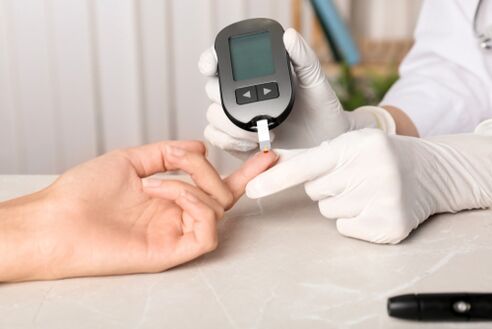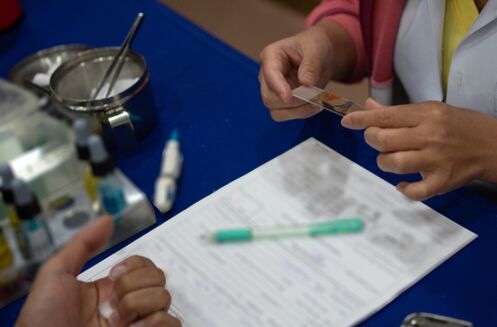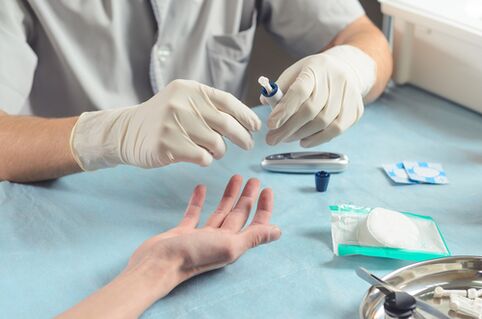
Diabetes mellitus is a chronic endocrine disease characterized by the inability to absorb the glucose that comes from food and necessary for the nutrition, breathing and metabolism of cell energy. In this case, production or interaction with the pancreatic hormone - insulin is damaged. It is necessary to regulate the quantitative presence of glucose in the bloodstream. With the improper functioning of a glucose pair -nsulin, hyperglycemia is a steady increase in glucose. Metabolism suffers, the work of the kidneys, heart, blood vessels and central nerve systems is disturbed.
Types of diabetes
There are two main types of diabetes, which, although they belong to a group of endocrine diseases, still have differences.
The first type of diabetes (dependent on insulin, minor, inzsd i type)
It is characterized by the fact that for whatever reason the immune system attacks beta pancreas cells (more than 80%), producing insulin. There is no hormone, but glucose is delivered to the body with food constantly. Blood sugar leaves the rate. First -type diabetes is most often detected in childhood or adolescence. But for adults it is not uncommon.
Diabetes second type (Insulin dependent, II II)
Type II diabetes is most often diagnosed in humans after 30-40 years. But the disease is getting younger. In 90 % of cases in patients, excess weight is observed. The body can still produce insulin, but cell sensitivity to insulin decreases (this is called insulin resistance). A wicked circle is born. Cells do not feel insulin, the body produces even more insulin to feed; Glucose cage simply accumulates in the blood, and insulin increases appetite. A person eats, jumps sugar, insulin resistance intensifies.
prediabetes
Here, the glucose level goes beyond the reference values, but you can't even talk about diabetes. The prediabet can become the basis for the development of type II diabetes as well as diseases of the cardiovascular system.
Gestational diabetes is characteristic during pregnancy. Most commonly found in trimester II or III.
Also, the course of the disease varies in severity: light (I), middle (II) and severe (III).
Diabetes. Symptoms
If you do not have the habit of donating blood for glucose once a year, and you do not know the endocrinologist personally from the clinic, there are a number of symptoms that may tell you that it is time to contact a specialist. But we will make a reservation immediately, signs of diabetes manifests if insulin deficiency is already going to a critical point. Therefore, at the moment, the most effective way to detect your sugar level is to donate blood.

Diabetes of the first type
Symptoms of first type diabetes:
Diabetes of the second type
Symptoms of second type diabetes are similar to type I diabetes in several parameters: it is thirst, hunger, dry mouth, fatigue, vision problems and frequent toilet stimulation. But this type has its own signs:
The causes of diabetes

Sadly, scientists cannot name the exact causes of developing diabetes in humans (especially the first type). Poor ecology, an abundance of viral infections and inadequate functioning of the immune system are taken as the basis. Among the causes of diabetes mellitus are usually distinguished:
Complications
This disease is secret, and if you do not observe the doctor's instructions, then complications of diabetes (chronic and acute) may occur, which endanger the work of the whole organism. Chronic complications are observed when a high level of sugar lasts long.

The following chronic complications can be distinguished:
Acute complications, developing rapidly, are usually associated with blood glucose fluctuations. Low (hypoglycemia) and high (hyperglycemia) leads to crises. The hypoglycemia crisis (3. 9 mmol/l or lower) manifests as a seizure, and hyperglycemic crises are dangerous for the appearance of diabetic ketoacidosis and hyperglycemic hyperosmolar condition. These are emergency and threatening conditions that lead to convulsions, coma and fatal results.
Diagnosis of diabetes
Diagnosis of diabetes is an important step. In an ideal situation, a person must be aware of his glucose level, especially after 45 years. But if it is in danger, then the analysis should be performed more often and you have to do it earlier so that it does not waste precious time.

Diabetes is diagnosed in several ways:
Treatment

When treating type I diabetes mellitus, the main treatment for insulin is the main treatment for insulin, which should be administered daily at a dose prescribed and calculated by the attending physician. You can use special insulin syringes, syringes or insulin pumps, independently calculating the necessary dose of the hormone presented. In certain conditions, it is possible to prescribe medicines for diabetes that stimulate the body to develop their insulin.
In the diabetes of the first species, the insulin of the chip daily, as the transitions are filled with the development of diabetic ketoacidosis, leading to death. Daily Insulin + Proper Food + Physical Activity can provide life without complications.
With type II diabetes, a doctor prescribes the treatment of the drug created to reduce sugar levels and normalize a person's condition. Sometimes it may be necessary for insulin replacement therapy, but there is no need to be taken daily. Diet in diabetes is observed without failing, as well as an increase in physical activity, body weight control.
In the presence of pre-diabetes, examination should be performed once every six months or one year. It is also necessary to get rid of excess weight and switch to dietary nutrition.
With gestational diabetes, it is necessary to carefully monitor the blood glucose level and follow the observational doctor's recommendations. Most often after childbirth, blood sugar returns to normal. But there is a risk of developing diabetes of the second type.
Forecasting and prevention
Diabetes mellitus is a serious endocrine disease that reduces life by 5-10 years, and men die more often than women. Infectious and viral diseases are more severely tolerated. Complications in the background of pneumonia, the flu occur 6 times more often, when compared to statistics from people without diabetes in one story. In healthy people, compared to diabetics, Alzheimer's and other forms of dementia develop less frequently.

But with diabetes you can and you have to fight. Competent management helps them avoid many problems and complications. So, 50-60% of cases of the disease are stabilized and do not progress.
Control and proper prevention of diabetes is:
Diabetes has not been fully studied, but medicines and a conscious attitude about their lives with this disease will help to live for a long time and without complications.
























